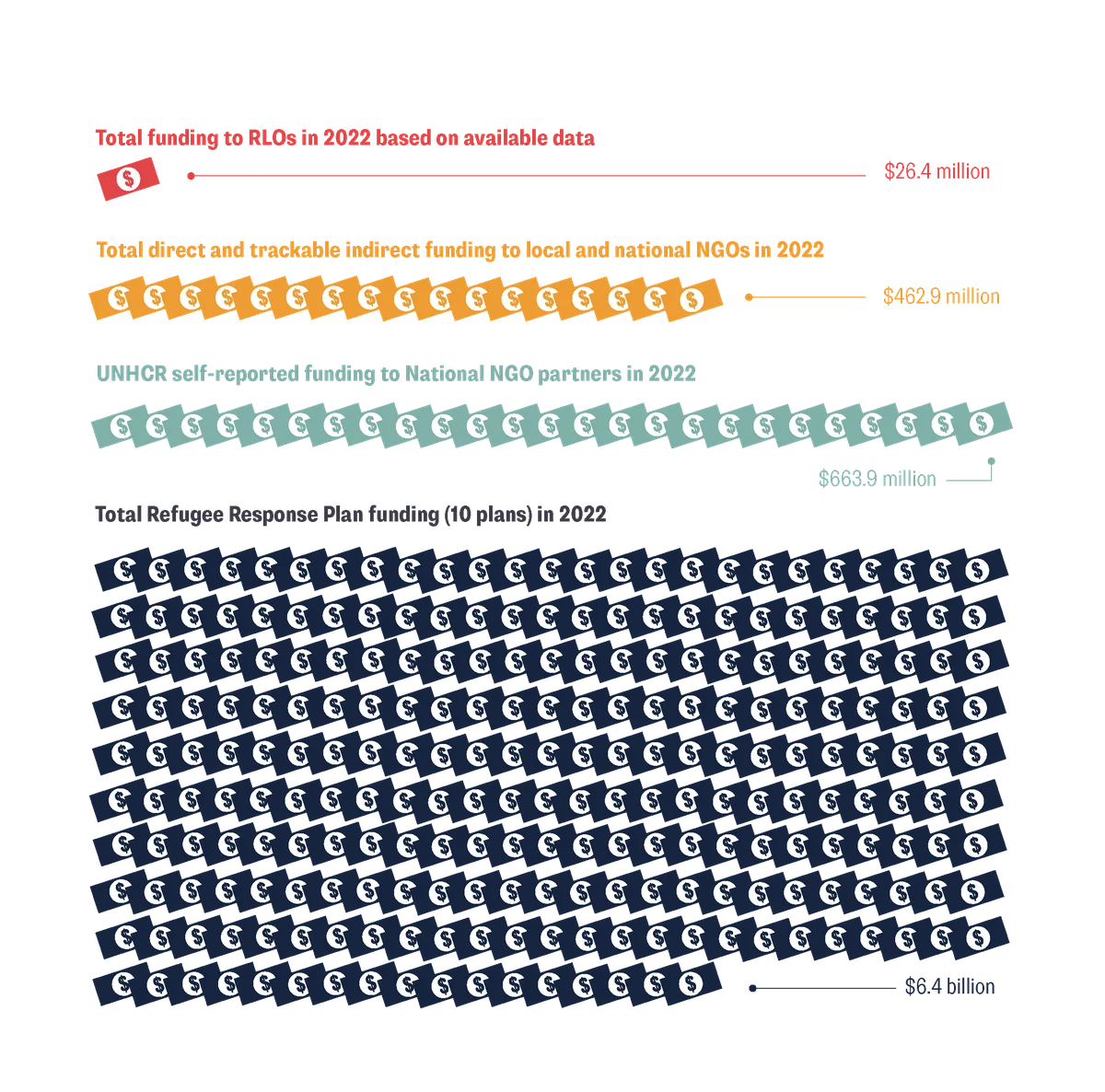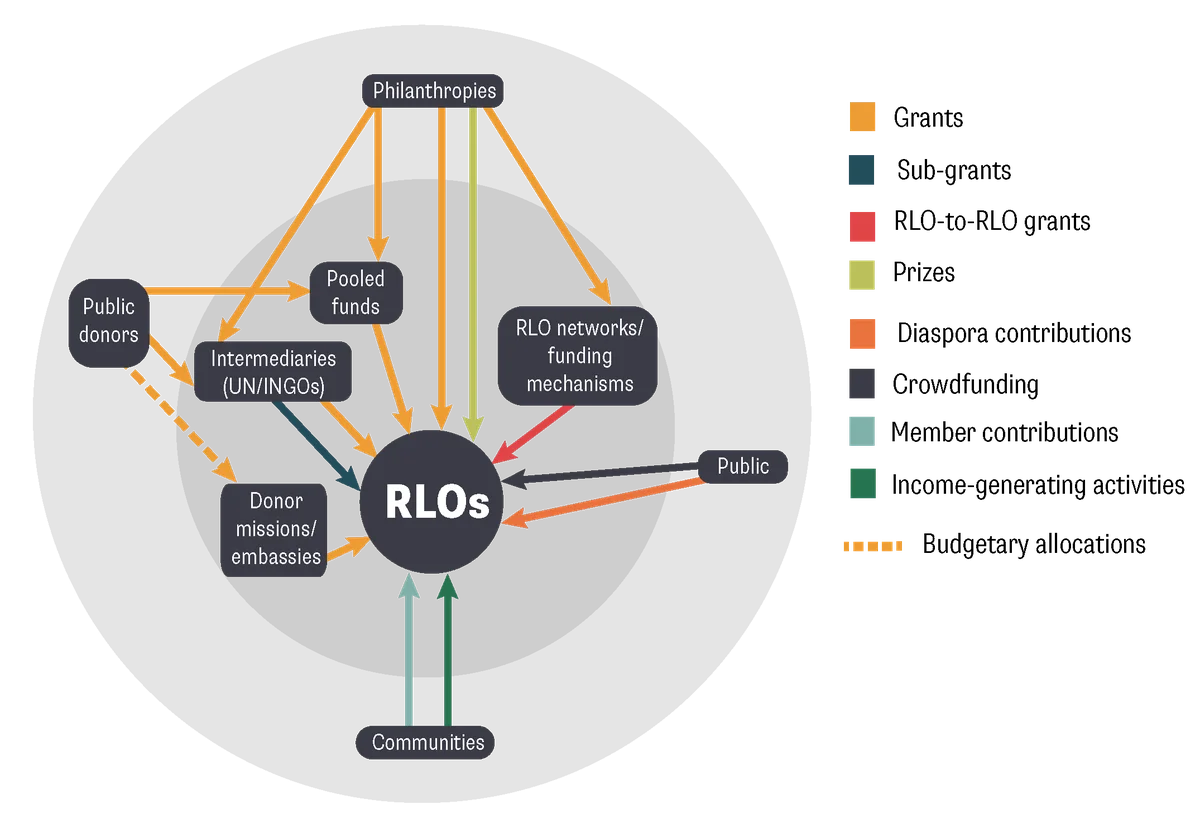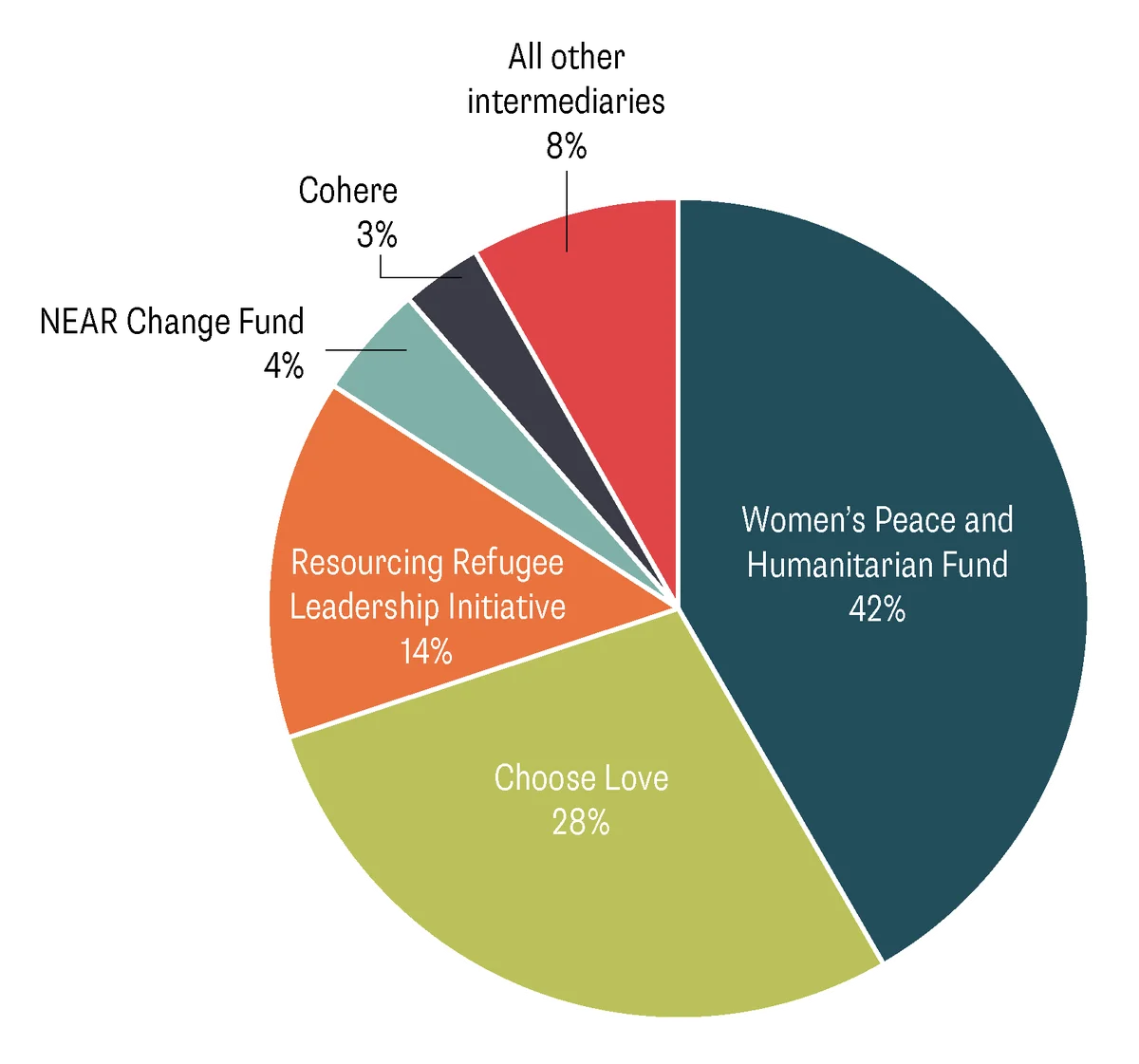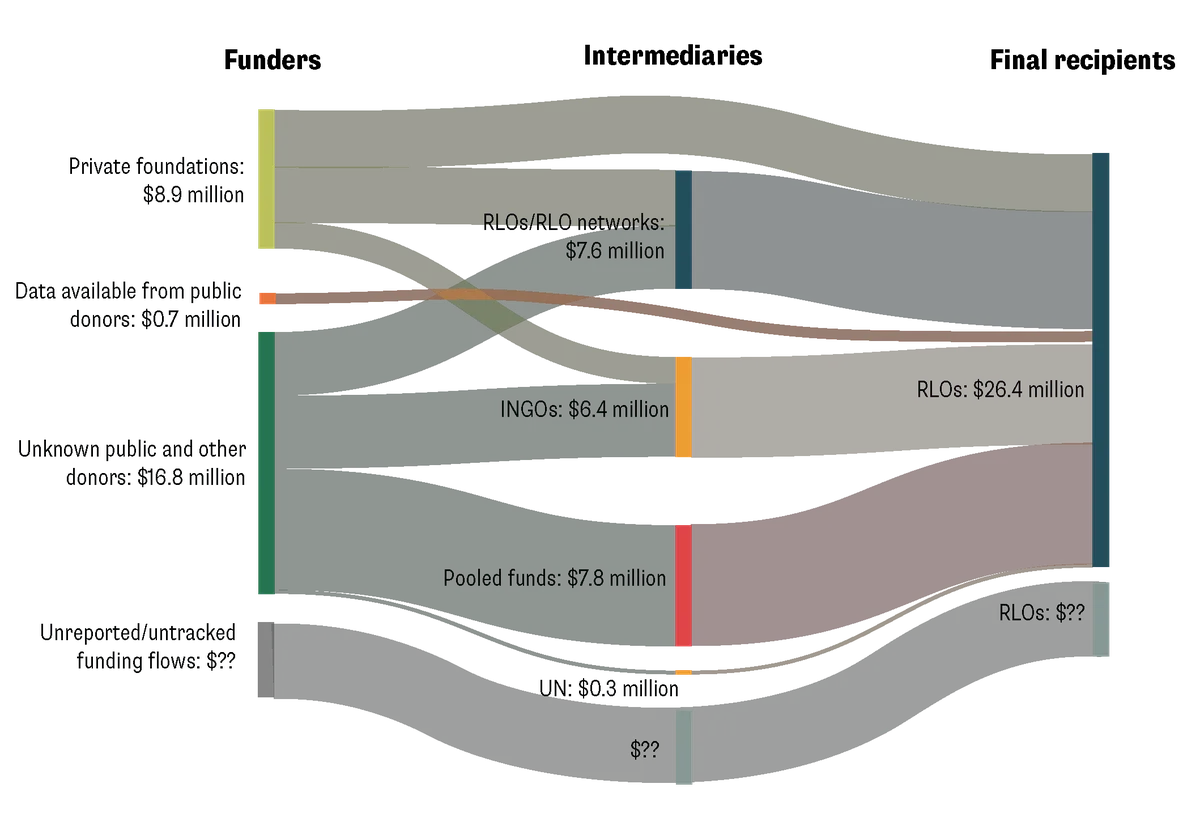The failure to fund refugee-led organisations
This report, produced by ODI’s Humanitarian Policy Group, in collaboration with Development Initiatives, asks why the current system is not working, and what potential there is for change.
Refugee-led organisations (RLOs) – and initiatives led by refugees – play a critical role in the lives of many displaced people. RLOs are often best placed to articulate and flexibly respond to the specific needs of their communities . Evidence shows they provide essential services to their communities and lead initiatives that are accountable, legitimate, effective and impactful .
However, until now, there has been very little understanding of how the international funding landscape interacts with, or supports, RLOs. Moreover, assumptions persist that are limiting funding opportunities for and inclusion of RLOs.
This summary provides key findings and recommendations that can improve how public and private donors, intermediaries and philanthropies work with RLOs. There are also suggestions for how CSOs can help improve transparency, accountability and inclusivity.
You can visit ODI’s website to download the full report .
RLOs are chronically underfunded and side-lined in refugee responses
The available data shows that just $26.4 million of humanitarian and development funding reached refugee-led organisations (RLOs) in 2022. Average grant sizes to RLOs are only $26,657 – 10 times smaller than the flows reported to local/national non-governmental organisations (NGOs).
The current system is stacked against RLOs. Those at the top need to transform the system from the inside, and put the long-standing rhetoric around localisation and refugee leadership into practical and tangible action.
Our recommendation: Urgently increase direct funding to RLOs.
- Build capacity so that direct funding is provided as standard to RLOs with the systems and capacity in place to absorb and manage grants.
- Normalise funding partnerships with RLOs by drawing attention to them.
- Support RLOs to increase their capacity to access and manage donor funding directly.
- Sustain pressure on public and private donors to meet commitments to increase direct funding to RLOs and other local and national actors.
RLO experiences of receiving international funding remain performative and tokenistic
Outdated, inaccurate and damaging assumptions about RLOs persist – for example that they are passive recipients of aid, and are a homogeneous group of small, informal organisations that are therefore too risky, biased and unreliable to fund.
In fact, RLOs are a constellation of organisations of different sizes, budgets, capacities and staffing. Many are strategic and well-established actors proactively tapping into a range of different funding mechanisms.
Our recommendation: Challenge the prevailing misconceptions and narratives around RLOs.
- Consciously commit to challenge the concepts, language and theoretical frameworks that reproduce discrimination and exclusion of RLOs.
- Implement structures so that RLOs can call out tokenistic and unfair partnerships without being ostracised and penalised.
- Compensate refugee leaders for their time, expertise and expenses.
Most funding to RLOs (83%) passes through at least one intermediary
Intermediaries that empower and support RLOs to access international funding and amplify their advocacy have a long-term role in increasing funding to RLOs.
But a better balance is needed. Well-established RLOs with the systems and capacity in place should be prioritised for direct funding. And when intermediaries are used to channel funding, donors should prioritise those that are led and staffed by refugees and/or that have a demonstrated commitment to co-designing initiatives and participatory selection processes.
Our recommendation: Adopt a pragmatic approach to intermediaries.
- Use intermediaries to increase funding to RLOs that would otherwise by excluded from funding opportunities, such as smaller RLOs or those operating in challenging regulatory environments.
- Prioritise intermediaries that are led and staffed by refugees and/or are willing to act as the ‘pot-holder’ and not the ‘gate-keeper’.
- Cascade quality funding (flexible, multi-year and inclusive of overheads) to RLO partners.
- Advocate to inspire all intermediaries to work as ‘pot-holders’ and not ‘gate-keepers’.
Funding for RLOs is being driven by private philanthropies
Nearly all the identified funding from donors came from philanthropies. Of the $8.9 million that philanthropies provided to RLOs in 2022, 42% was directly granted to RLOs, 39% was passed to RLO networks, and the remaining (19%) was provided to international NGOs to pass on to RLOs.
Philanthropies are also more likely to provide flexible funding that includes overheads, and adopt a lighter touch approach to reporting and submissions – helping to alleviate the administrative burden that funding processes currently place on RLOs. Most RLO intermediaries adopt a similar approach.
Our recommendation: Streamline and simplify funding processes by scaling up the innovative approaches being pioneered by philanthropies and RLO intermediaries. This could include:
- Funding applications and grant-making processes with flexible deadlines, user-friendly portals, multiple language submissions, low technological requirements and proportionate reporting.
- Collective due diligence passporting so that RLOs do not need to undergo multiple and repetitive compliance processes with numerous donors.
- Fiscal sponsors – third-party partners who receive funding on behalf of RLOs unable to register in-country or open bank accounts.
Funding to RLOs is not adequately or transparently tracked
Very few donors and international organisations track or transparently report their funding to RLOs. This was especially stark for government donors and UN agencies.
There is no commonly agreed RLO definition. Definitions are necessary for tracking funding and, by extension, advocating for funding increases and holding organisations to account for their funding practices.
Our recommendation: Commit to better tracking and reporting of funding.
- Commit to a widely accepted definition of RLOs to enable better tracking.
- Publish funding made directly to RLOs on publicly available platforms (such as the Financial Tracking Service (FTS) and the International Aid Transparency Initiative (IATI)) and require intermediaries to do the same.
- Publish the onward granting of funds from intermediaries to RLOs.
- Collectively monitor progress on reporting and tracking and ensure the data needs of different actors are met.
► Read more from DI about humanitarian assistance
► Share your thoughts with us on Twitter or LinkedIn
► Sign up to our mailing list
Authors
This report is authored by Caitlin Sturridge, Senior Research Fellow, ODI; Fran Girling-Morris, Senior Policy & Engagement Advisor, DI; Alexandra Spencer, Senior Research Officer, ODI; Andhira Kara, Refugee advocate and researcher, R-SEAT; and Carina Chicet, Senior Analyst, formerly of DI.
Related content
Donors at the triple nexus
DI Senior Policy & Engagement Advisor Sarah Dalrymple presents some of our recent analysis into how donors like Sweden and the UK are approaching the triple nexus between humanitarian, development and peace approaches in crisis contexts.
Implications of coronavirus on financing for sustainable development
DI Executive Director Harpinder Collacott summarises the possible impacts of the coronavirus pandemic on global development - including projections for extreme poverty, the future of different forms of financing, and the countries likely to be most impacted.
What do emerging trends in development finance mean for crisis actors?
DI's webinar ‘What do emerging trends in development finance mean for crisis actors?’ gives crisis actors key information on development finance to better understand what it means for them.




